The Animals
Gray Wolf
General Info
Common Name: Gray Wolf
Scientific Name: Canis lupus
Physical Appearance: World’s largest canid, with significant variation in size and coloration. Traditional pelage is long; the upper parts are usually light brown or gray, sprinkled with black, and the underparts/legs are yellow-white. Color variation has been noted to range from white, brown, gray, to black.
Length/Weight: Males average 4.5-6 feet and females average 4-5.5 feet, from nose to tail. Males range between 40-175 lbs.; females 30-120 lbs.
Lifespan: 5-13 years in the wild, up to 17 years in captivity.
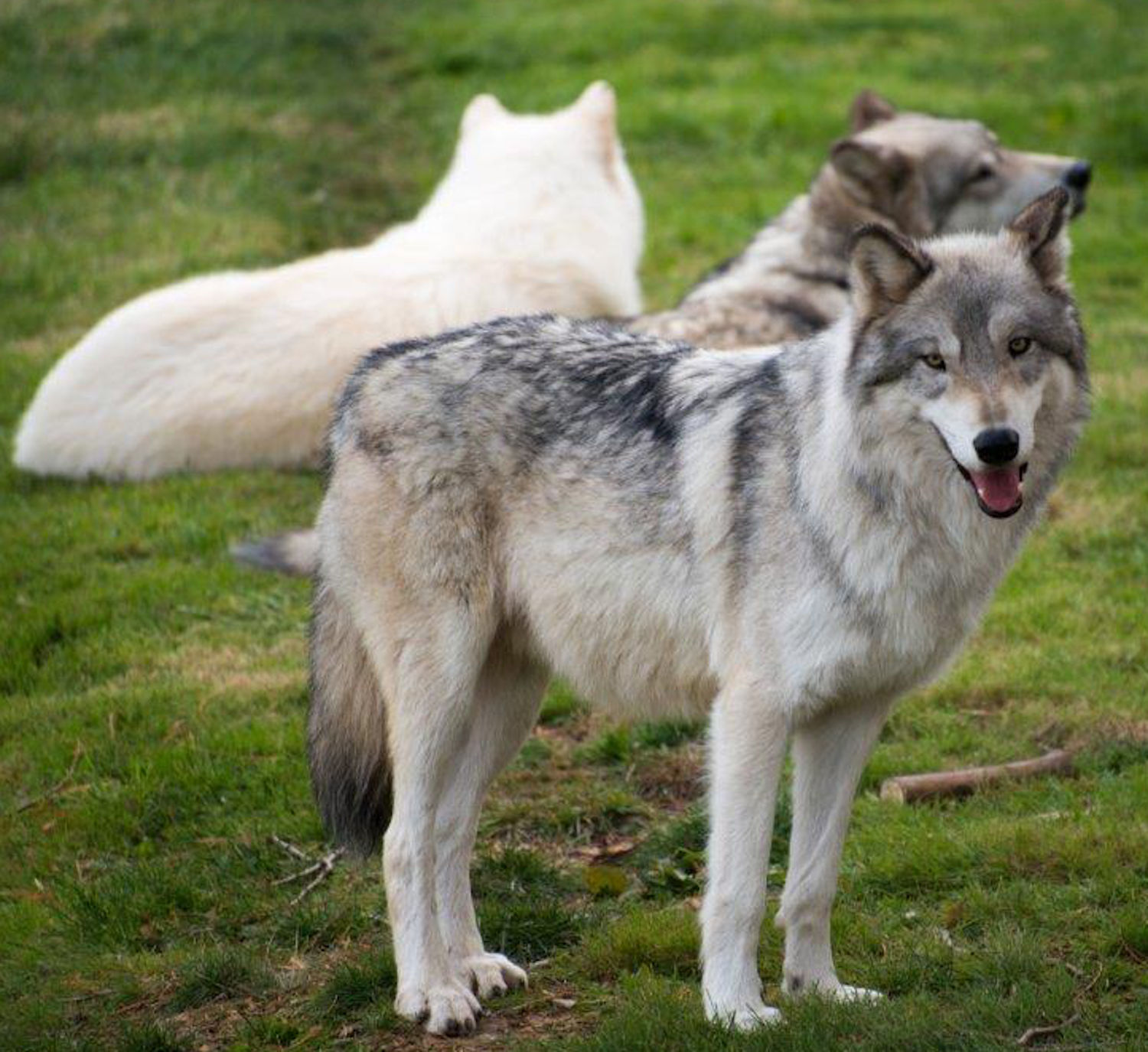
Environment
Range: Found in North America and Eurasia.
Habitat: Wide range of habitat types; including desert, open plains, steppe, mountainous areas, swamps, forests, and Arctic tundra. Can withstand temperatures ranging from -70ºF to 120ºF.
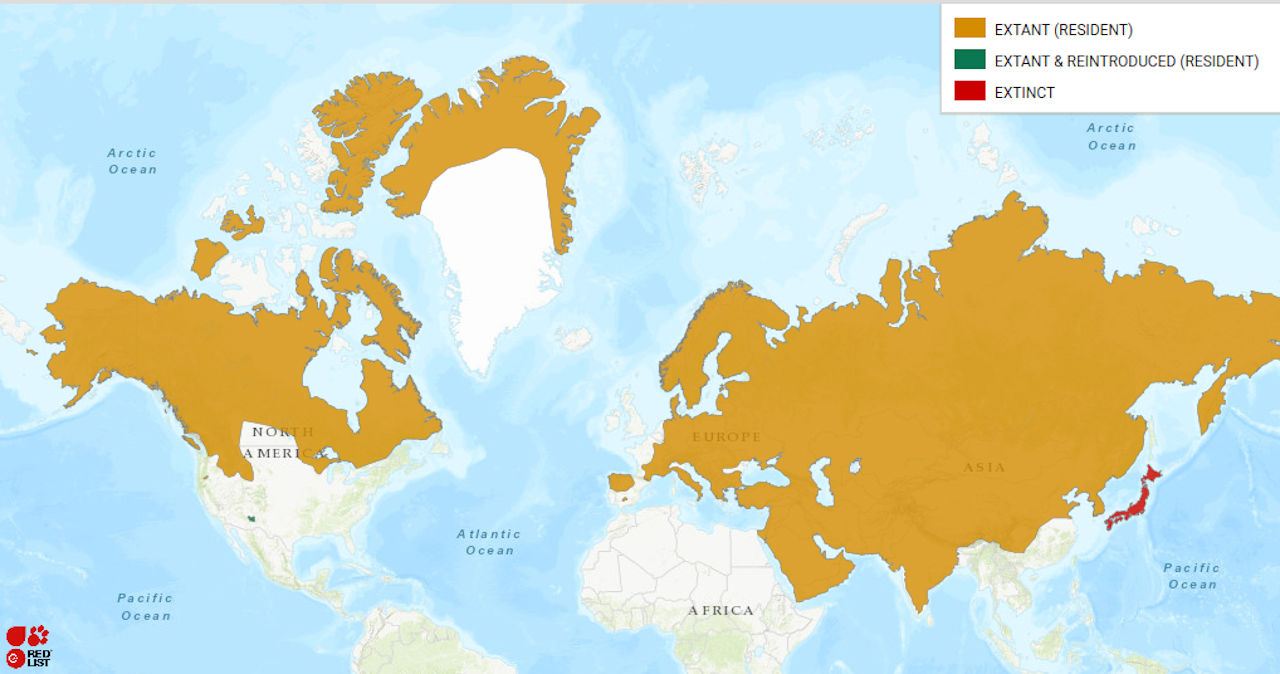
Diet
Gray wolves are carnivores; main prey being large ungulates (deer, moose, caribou, bison, muskox, mountain sheep) in order to sustain the pack. Adult wolves are able to consume upwards of 20 lbs. of food at a time. Prey is located by chance encounter, direct scenting, or following a fresh trail. Wolves can maintain a rapid pursuit for at least 20 minutes. A chase can ensue ranging from a quarter mile to three miles.
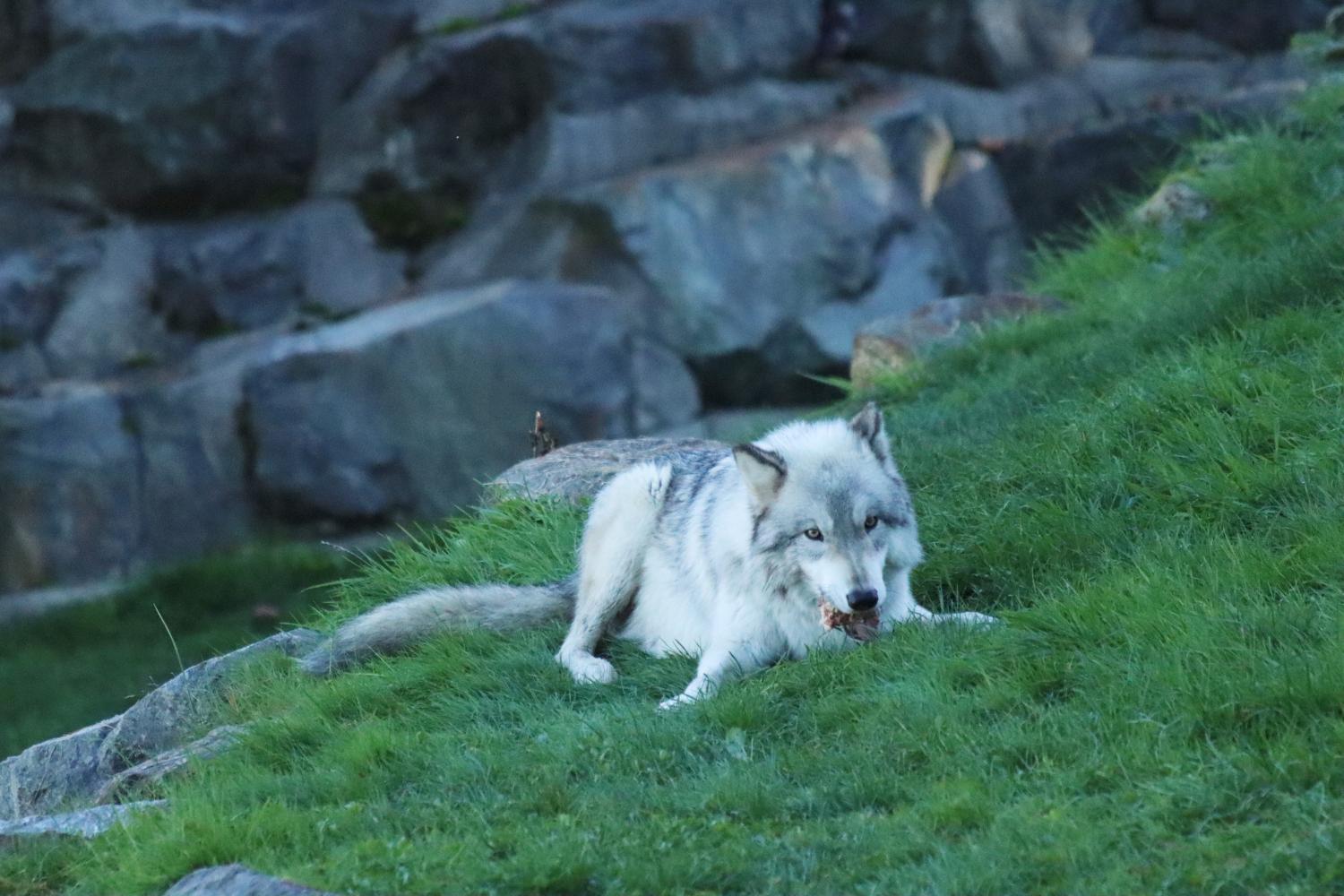
Reproduction
Seasonal; mating time of year depends on geographic region (Washington State: late February). Gestation average is 62-65 days. Average litter size is 4-7 pups. The pack’s dominant female is the only breeder. Weening occurs at 8-10 weeks old, with the pups starting to travel with the pack between 4-6 months old. Dispersal is usually around 1-2 years old, but there have been accounts of offspring not leaving until 5 years old. Sexually maturity for both sexes is around 10 months old, but the opportunity to breed rarely arises before 3 years old.
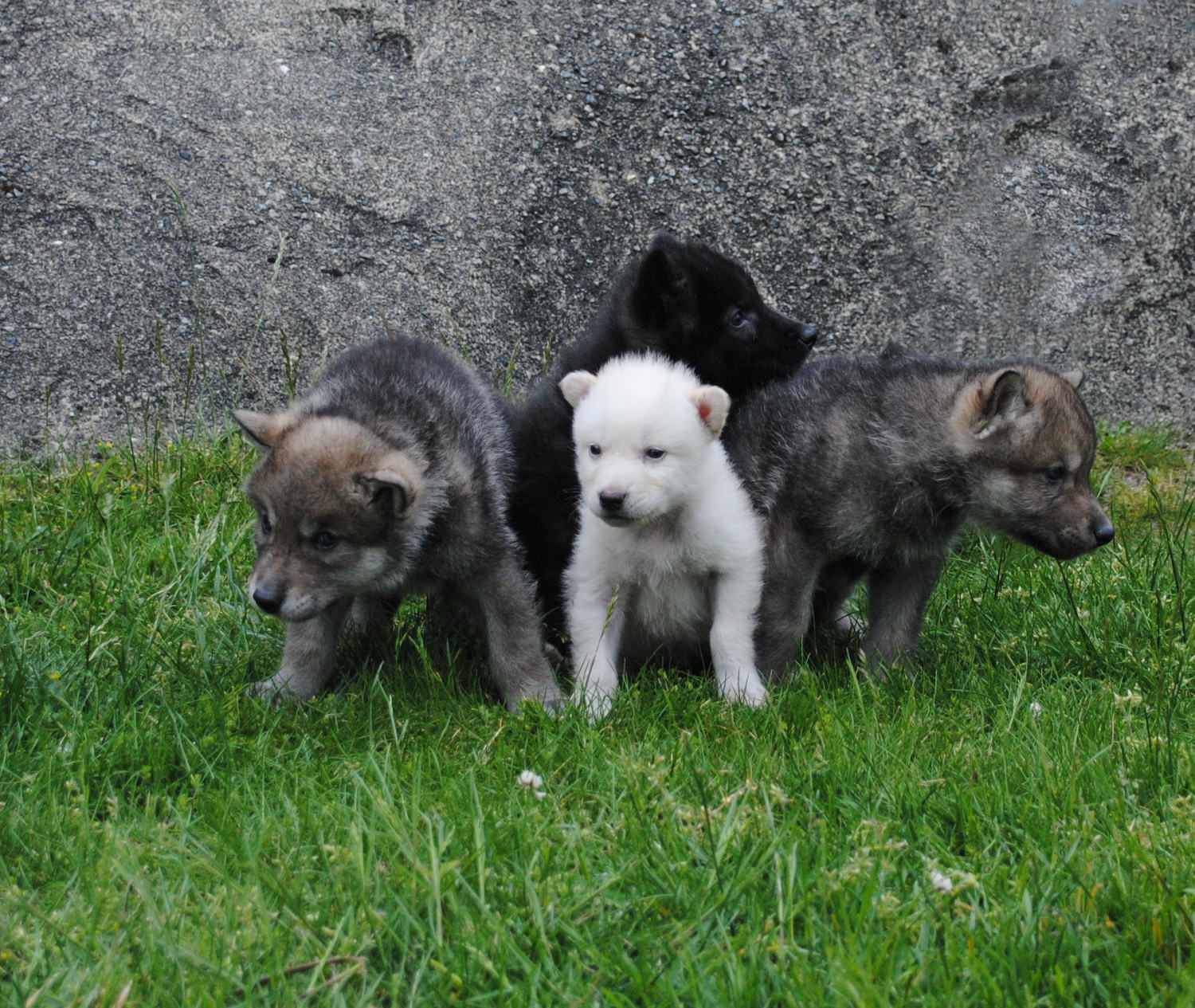
Conservation
Status:
Listed on IUCN: LEAST CONCERN
Population Trend: STABLE
Federal Status Listing: ENDANGERED
Efforts: Threatened by habitat destruction, human-carnivore conflict, and illegal poaching. Protected in specific regions.
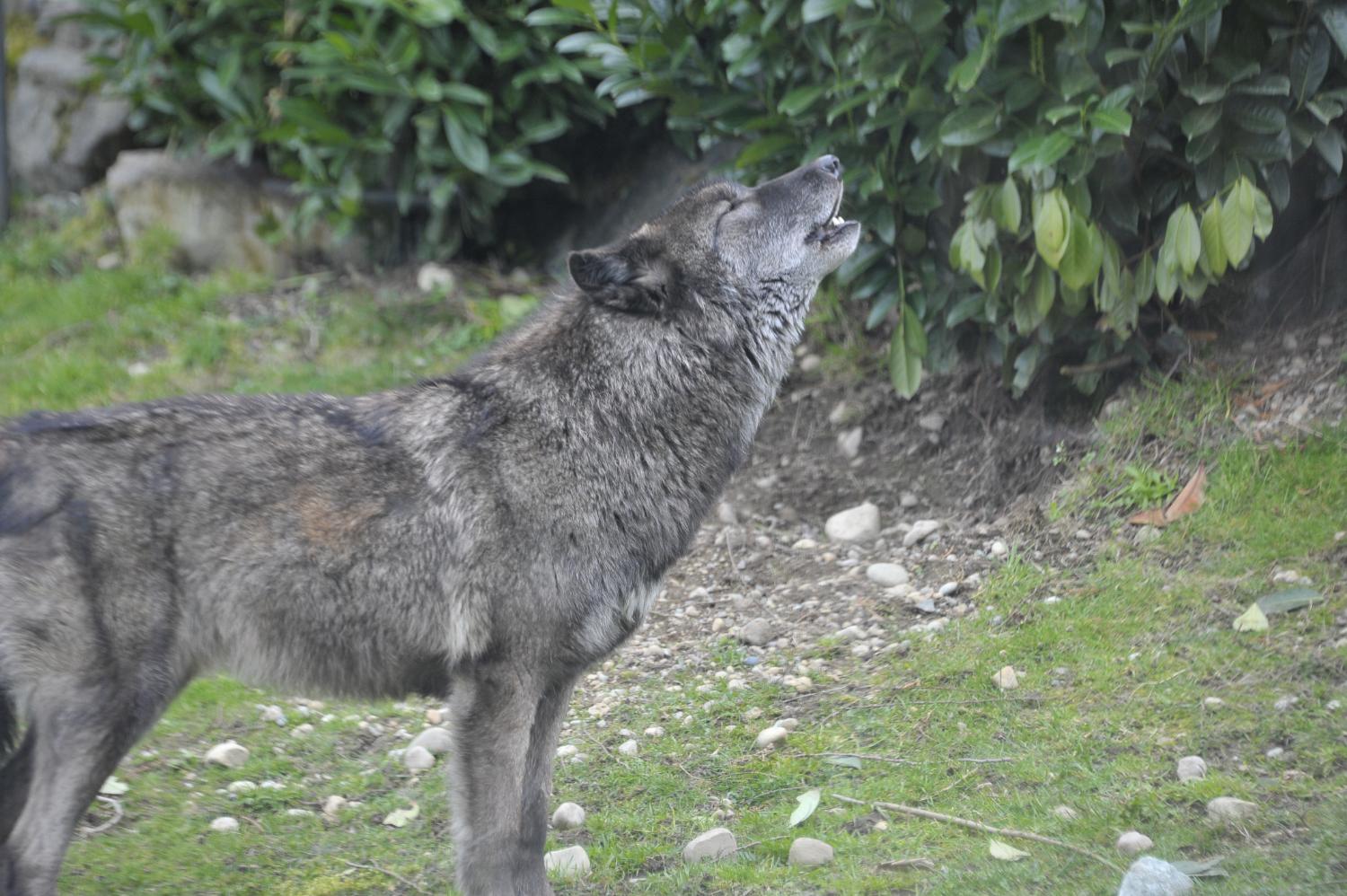
Important Facts
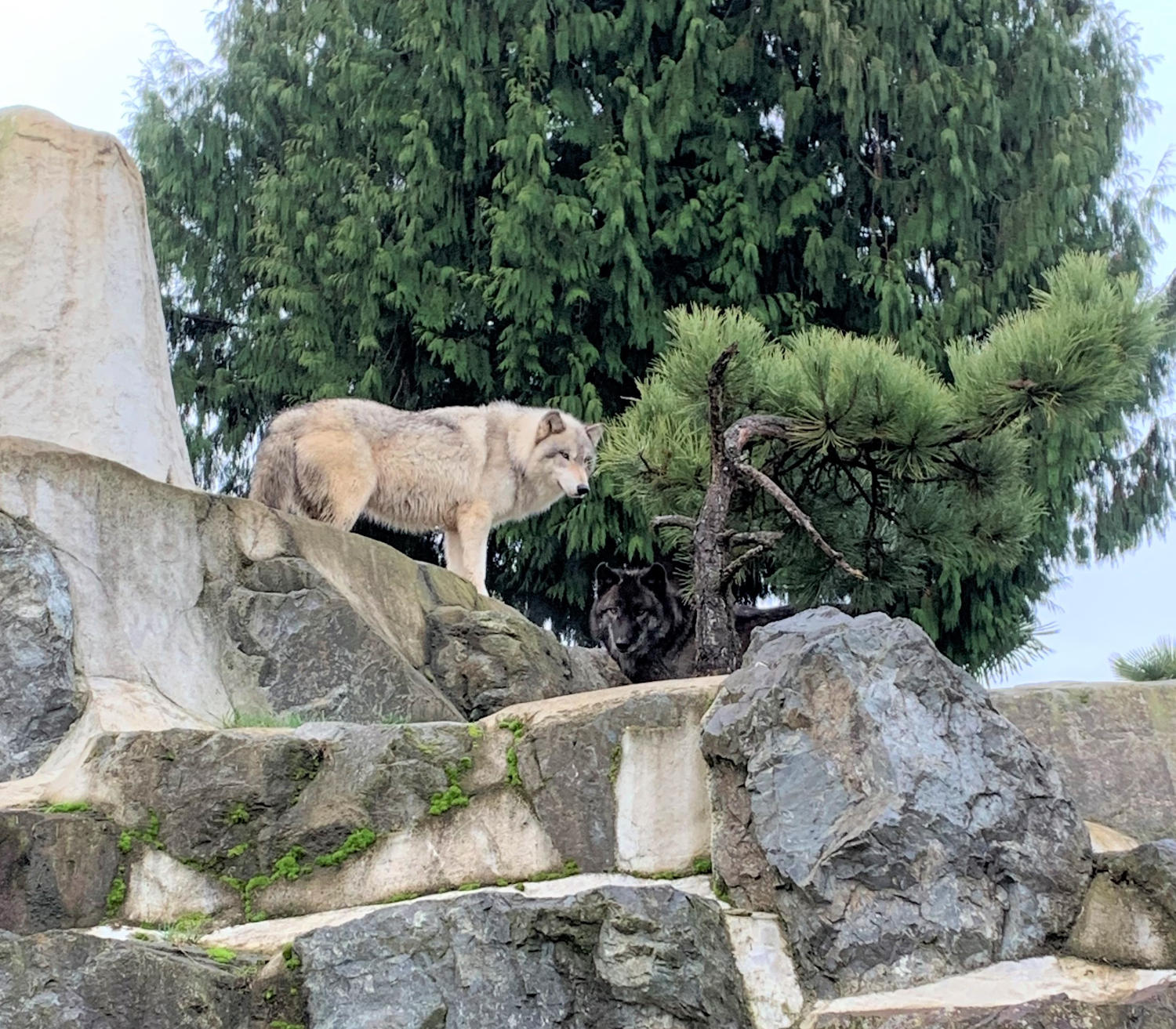
The gray wolf has the greatest natural range of any living terrestrial mammal other than humans.
Gray wolves have been recorded to travel more than 43 miles/day, run between 34-38 mph, and swim as far as 8 miles.
Highly social species, with packs being found to number as high as 42 members; typical pack is 2-15 members.
Sources:
Carnivores of the World: SECOND EDITION
Walker’s CARNIVORES of the World
Wolves: Behavior, Ecology, and Conservation
Washington Department of Fish and Wildlife



